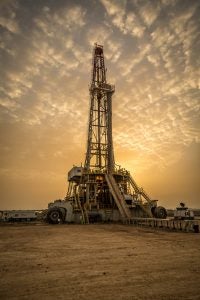 The United States onshore oil and gas industry operates nearly one million production wells across 30 states. To protect our health and environment, these wells must be designed, constructed, operated, maintained and closed in a way that prevents leaks and explosions.
The United States onshore oil and gas industry operates nearly one million production wells across 30 states. To protect our health and environment, these wells must be designed, constructed, operated, maintained and closed in a way that prevents leaks and explosions.
To help regulators keep current on leading practices for protecting our environment from the risks associated with oil and gas production, EDF teamed up with Southwestern Energy and dozens of experts in industry, government, academia and advocacy to develop a Model Regulatory Framework for Hydraulically Fractured Hydrocarbon Production Wells in 2014. The framework has been used by states around the country as they have developed or updated well integrity regulations — notably, when Texas adopted several dozen ideas from the framework, blowouts fell 40% (and injuries from blowouts 50%) the next year.
EDF recently launched a new edition of the framework, which contains around 60 improvements based on the latest research and recommendations from oil and gas industry’s technical societies.
Here are some of the key changes in this new edition.
Preventing frac hits
Interwellbore communication incidents, sometimes known as “frac hits” or even “well bashing,” have been on the rise in recent years as horizontal and vertical well development areas increasingly overlap. These incidents threaten the economic productivity of impacted wells in addition to creating groundwater and surface water pollution risks — the new framework provides avenues for mitigation through planning, monitoring and information sharing.
EDF issues new framework to help make oil and gas wells safer Share on XCement testing
A competent cement job is among the most important elements to maintain well integrity and prevent pollution. Cement mixtures are not often tested, with cementers relying on data that may bear little resemblance to actual field conditions. The updated framework calls for cement mixture testing whenever there is a change in operating conditions, cement type, cement vendor, or every six months, whichever is more frequent. This will help ensure that cement mixtures hold up to the task.
Well “check-ups”
Most oil and gas regulation focuses on high-risk moments in a well’s life, like drilling, completion and plugging. However, wells can spend decades in production, and regular wear and tear can cause pollution. The new guidance in the framework is based on the latest industry-recommended practices for monitoring the health of wells during their productive lives.
Delivering better data
Regulators rely on geological and operational data provided by well operators to verify the industry is operating responsibly. Our framework includes new triggers for reporting actionable information to regulators to help avoid drilling hazards and to ensure remediation is effective. The framework also emphasizes electronic reporting to reduce costs and increase the accuracy and utility of submitted information.
These changes are representative of the updates EDF made to ensure our recommendations are rigorous from a scientific and engineering standpoint, reflective of current leading real-world field practices, and implementable by regulatory agencies.
EDF encourages regulators to consult the Model Regulatory Framework for ideas, and for all stakeholders to give us feedback to help make the next edition even more useful. The risks to health, safety and the environment from oil and gas wells can be mitigated with proper procedures and oversight, and we hope the framework can contribute to reducing those risks as much as possible.









